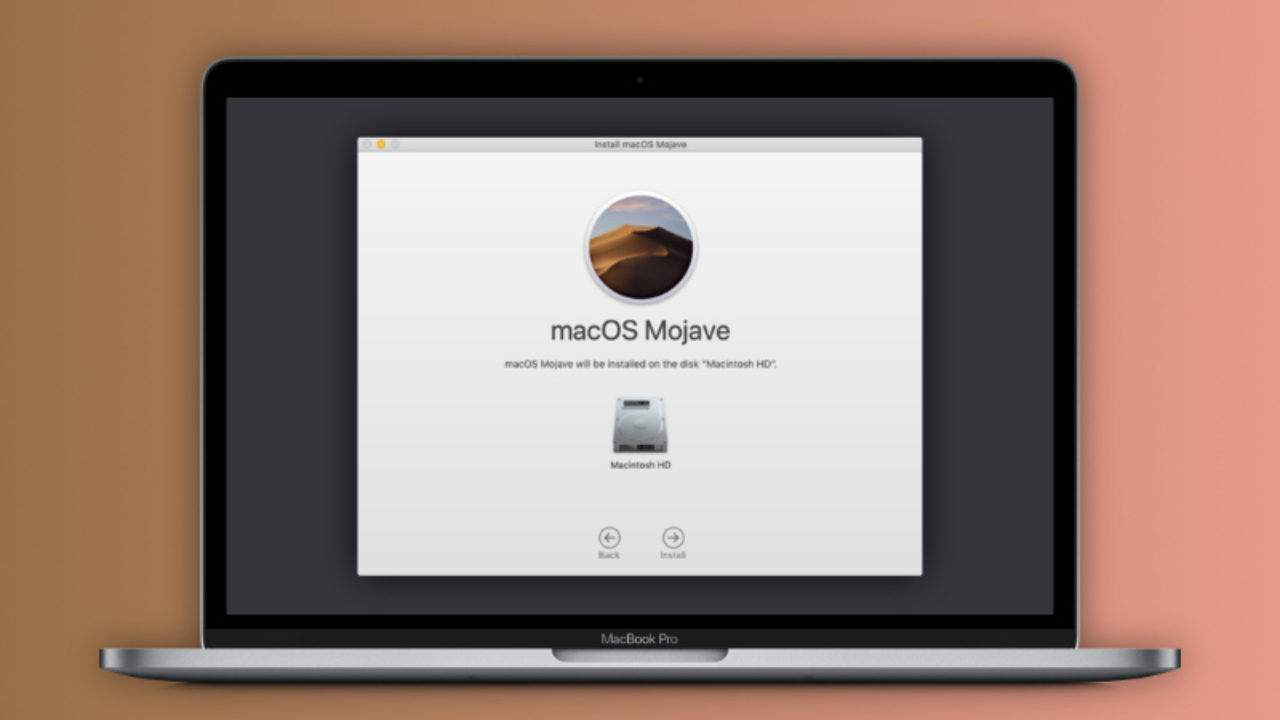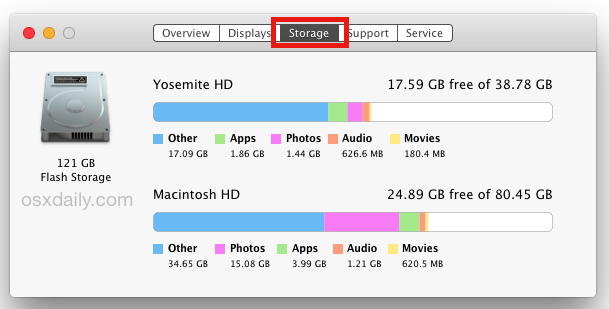

'Your startup disk is almost full. To make more space available on your startup disk, delete some files.' Inevitably, a full startup disk warning as such comes up on your MacBook Pro/Air, iMac, Mac Mini at some point. It indicates that you are running out of storage of the startup disk, which should be taken seriously, because a (almost) full startup disk will slow down your Mac and in extreme cases, the Mac won't start when startup disc was full.
In this post, we will cover every question you may have about full startup disk on Mac, including:
What is Startup Disk on Mac?
Simply put, a startup disk on Mac is a disk with a operating system(such as macOS Mojave) on it. Usually there is only one startup disk on a Mac, but it is also possible that you have divided your hard drive into different disks and get multiple startup disks.
Just to be sure, make all disks show up on your desktop: click Finder on the Dock, select Preferences and check 'Hard disks'. If there are multiple icons showing up on Mac, it means that you have multiple disks on your Mac. However, you only need to clean the startup disk that your Mac is currently running on, which is the one that have been selected on System Preferences > Startup Disk.
Free Up Space Mac
What Does It Mean When Your Startup Disk Is Full?
When you are seeing this 'your startup disk is almost full' messages, it means that your MacBook or iMac is running on low space and you should clear your startup disk as soon as possible. Or the Mac will be acting weirdly because there is no enough storage space, such as getting intolerably slow, apps crashing unexpectedly.
So find out what's taking up space on your startup disks and make room on startup disk immediately. If you don't have time to delete files from startup disks one by one, you can ignore the rest of the article and download Macube Cleaner(opens new window), a disk cleanup tool which can shows what's taking up space on the disk and remove unneeded large files, duplicate files, system files all at once.
What is taking up all of my startup disk space? Now that we’ve identified our startup disk, let’s take a closer look at how to clear up space on Mac: Click the Apple Icon in the menu at the top-left corner of your screen. Choose “About This Mac.” Click Storage. How to check the free space on your startup disk. Even if your Mac hasn’t warned you that the startup disk is almost full, you should regularly check how much free space you’ve got left so you can fix any problems as they develop. Here’s the easiest way to check the free space on your Mac: Click the Apple logo in the top-left corner of.
Aug 05, 2021 Click on the Apple icon and select About this Mac. It will show how many storage has been used in your startup disk by which kind of data, such as photos, documents, audios, backups, movies and other. If you are running on macOS Sierra or higher, you can optimize storage on Mac to free up space on startup disk.

How to See What's Taking up Space on Mac Startup Disk?
Why is my startup disk getting almost full. You can find the culprits by visiting About this Mac.
Step 1. Click on the Apple icon and select About this Mac.
Step 2. Click Storage.
Step 3. It will show how many storage has been used in your startup disk by which kind of data, such as photos, documents, audios, backups, movies and other.
If you are running on macOS Sierra or higher, you can optimize storage on Mac to free up space on startup disk. Click Manage and you can have all the options to optimize storage. Basically, the solution is to move your photos and documents to iCloud, so make sure you have enough iCloud storage.
How to Clean Startup Disk on MacBook/iMac/Mac Mini?
As you have figured our what is taking up space on the startup disk, you can start to clean the startup disk. If you are looking for a convenient way to clear disk space on Mac, Macube Cleaner(opens new window)is recommended. It can find out all junk files on startup disk and clean them in one click.
For example, if you find that photos is taking up too much space of the startup disk, you can use Similar Image Finder and Photo Cache on MacMaster to clear the startup disk.
To clean system storage on startup disk, MacMaster can delete System Junk, including cache, logs and more.
And if it is apps that are occupying the most space of startup disk, MacMaster Uninstaller can completely remove unwanted apps and related app data to reduce system storage on Mac.
MacMaster can also find and delete large/old files, iOS backups, mail attachments, trash, extensions and many other junk files from startup disk. It can make the startup disk almost full gone right away.
Download the free trial version of FonePaw MacMaster to have a try right away. It works with macOS Mojave, macOS High Sierra, macOS Sierra, OS X El Capitan and more.
Also, you can clean startup disk step by step manually, which will take longer time and more patient. Read on.
Empty the Trash
This may sound silly, but when you drag a file to the Trash, it is still using your disk space until you empty the file from the Trash. So the first thing you should do when your Mac tells you the startup is almost full is to empty the Trash. Before you do so, you should really make sure that all files on the Trash are useless. Emptying Trash is simply and can free up space on your startup disk right away.
Step 1. Right click the Trash icon in the the Dock.
Step 2. Select 'Empty Trash.'
Clean up Caches on Mac
A cache file is a temporary file created by apps and programs to run more quickly. Caches that you don't need, for example, caches of the applications that you no longer use, can fill up the disk space. So follow the steps below to remove caches and some caches are needed, Mac will automatically recreate them in the next reboot.
Step 1. Open Finder and select Go.
Step 2. Click on 'Go to Folder…'
Step 3. Type in '~/Library/Caches' and hit Enter. Delete all cache files that are large in size or belong to the application that you no longer use.
Step 4. Again, type in '/Library/Caches' in Go to Folder window and hit Enter. And then remove the cache files.
Remember to empty trash to regain disk space.
Delete Old iOS Backups and Updates
If you often use iTunes to back up or upgrade your iOS devices, there may be backups and iOS software updates that are taking up your startup disk space. Find the iOS backups and update files and get rid of them.
Step 1. To locate iOS backups, open 'Go to Folder…' and enter the this path: ~/Library/Application Support/MobileSync/Backup/.
Step 2. To locate iOS software updates, open 'Go to Folder…' and enter the the path for iPhone: ~/Library/iTunes/iPhone Software Updates or the path for iPad: ~/Library/iTunes/iPad Software Updates.
Step 3. Clean all the old backups and update files you have found.
If you are using FonePaw MacMaster, you can click its iTunes Junk option(opens new window)to easily get rid of all backups, updates, and other junks iTunes has created all altogether.
Remove Duplicate Music and Videos on Mac
You may have many duplicate music and videos on your Mac that taking up extra space on your startup disk, for example, the songs that you have download twice. iTunes can detect duplicate music and videos on its library.
Step 1. Open iTunes.
Step 2. Click the View in the Menu and select Show Duplicate Items.
How To Free Up Space On Mac Startup Disk Won T Start
Step 3. You can then examine the duplicate music and videos and remove those you don't need.
If you need to detect duplicate files of other kinds, such as documents, photos, use FonePaw MacMaster.
Remove Large Files
The most effective way to free up space on startup disk is to remove large items from it. You can use Finder to quickly filter larger files. Then you can directly delete them or move them to an external storage device to free up space. This should quickly fix the 'startup disk almost full' error.

Step 1. Open Finder and go to any folder you like.
Step 2. Click 'This Mac' and select 'File Size' as the filter.
Step 3. Enter a file size to find files that is greater than the size. For example, find files that are larger than 500 MB.
Clear Space On Mac
Step 4. After that, you can identify the files and remove those you don't need.
How To Free Up Space On My Mac Startup Disc
Restart Your Mac
Make Space On Startup Disk
After the above steps, you can now restart Mac to make the changes to take effect. You should regain a large amount of free space after all the deleting and stop seeing 'the startup disk is almost full.' But as you continue to use the Mac, the startup disk may get full again, so get FonePaw MacMaster on your Mac to clean up space from time to time.